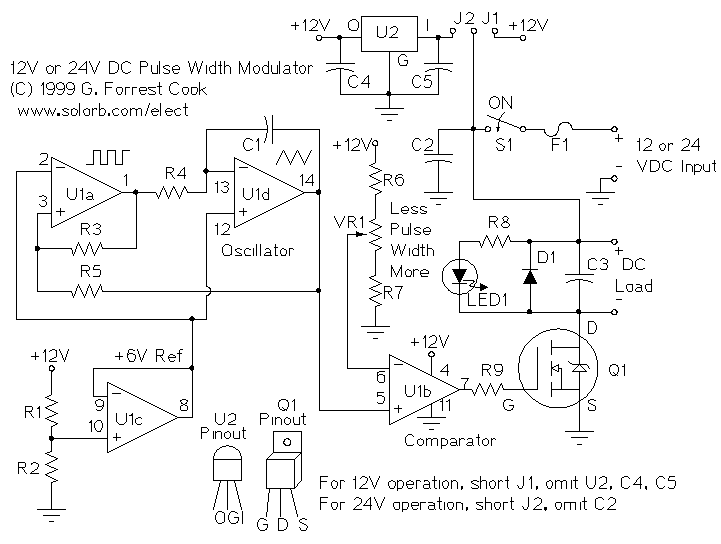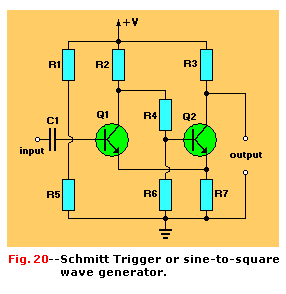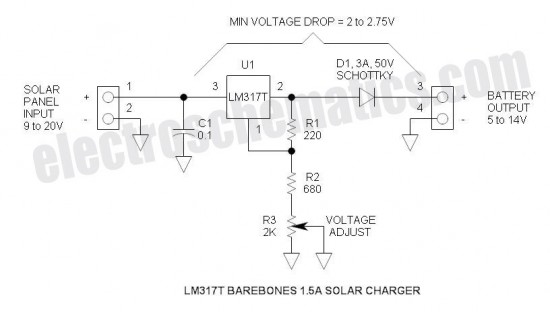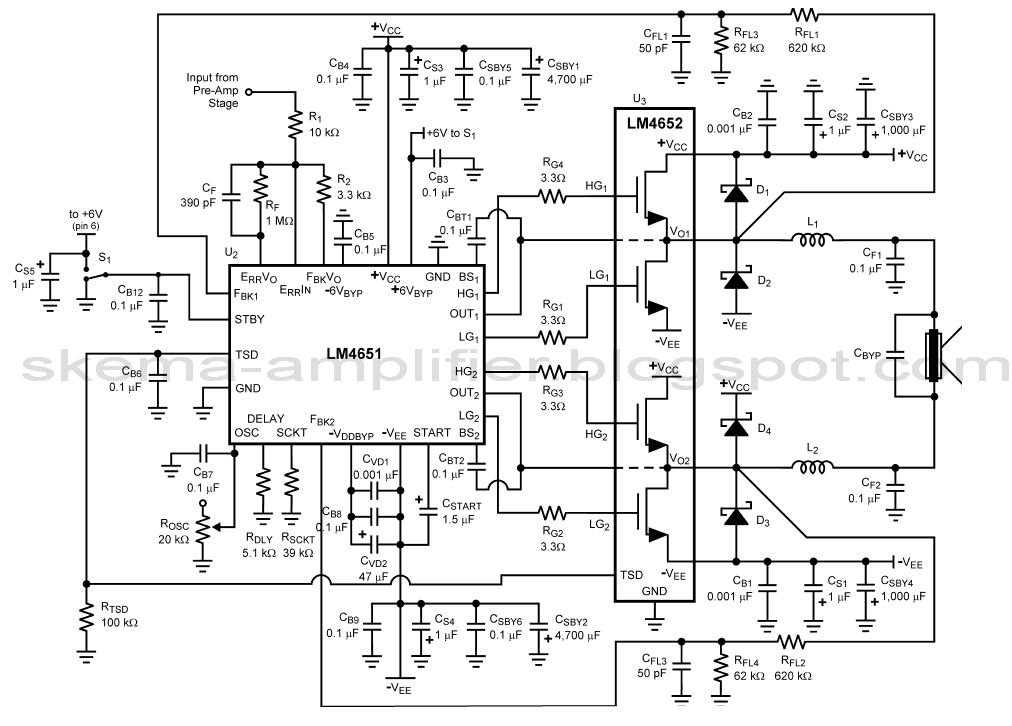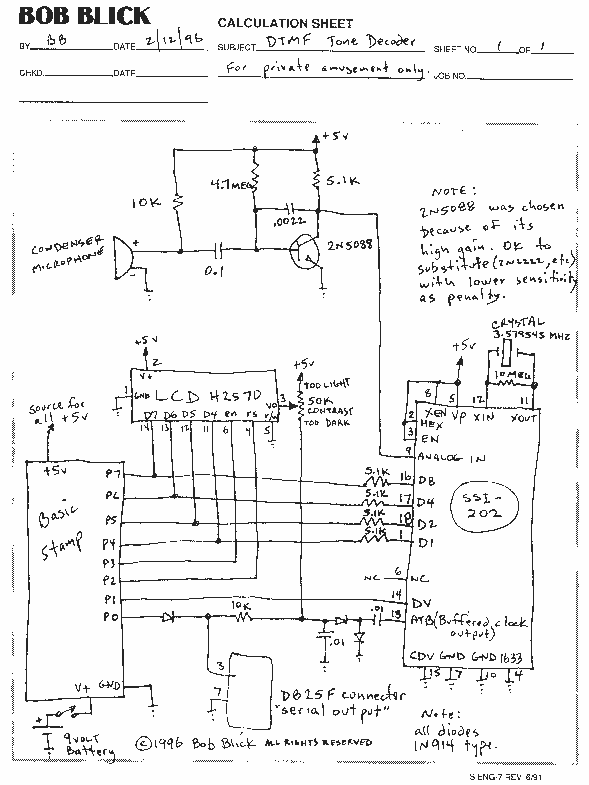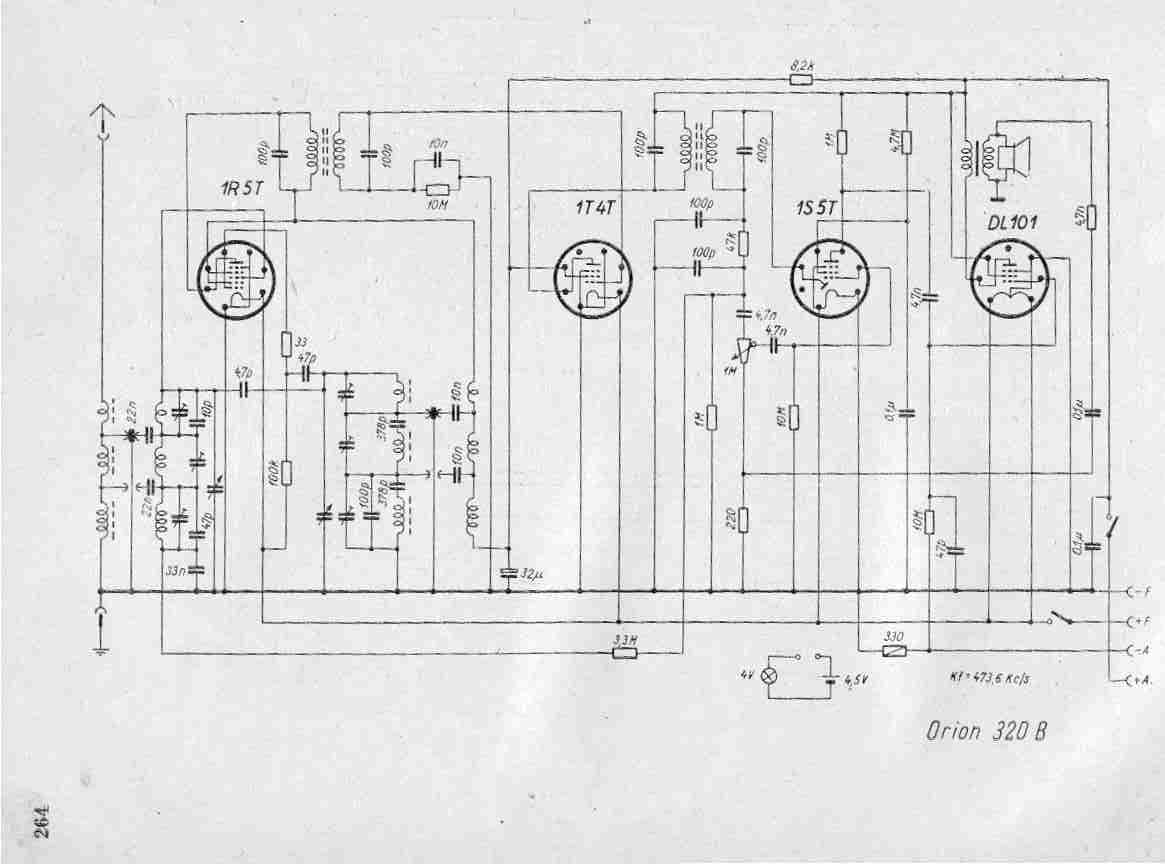
Telephony Circuits and DTMF Circuits
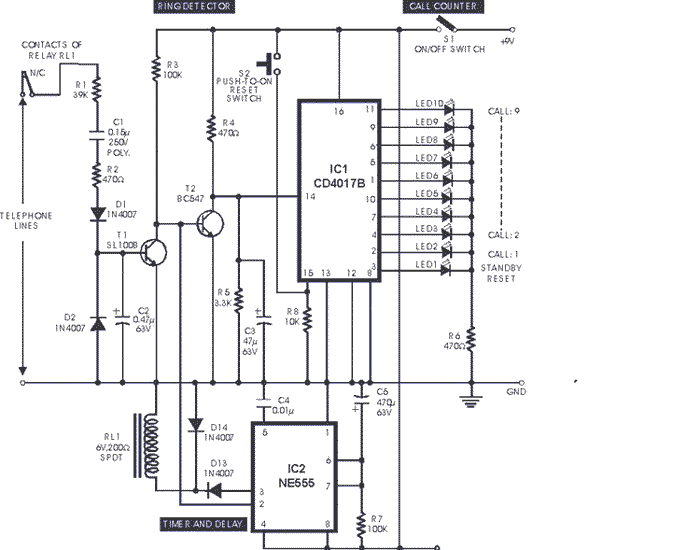
This circuit is designed to support nine independent telephones using a single telephone line pair, allowing for operation at nine different locations. It includes a bidirectional telephone line simulator that does not require actual telephone lines, enabling the coupling, testing, and demonstration of various telephone equipment such as answering machines, modems, faxes, call recorders, call diverters, extension ringers, telephone ring boosters, and security autodialers. Additionally, it facilitates the coupling of modem-equipped PCs for gaming or testing communications software. Cordless phones operate in the analog domain, utilizing frequencies between 30-50 MHz, with signals that are FM-modulated and easily received by any FM receiver.
DTMF generation is achieved using a 3.58 MHz crystal; it involves selecting and combining two audio tone frequencies corresponding to the rows (low band frequency) and columns (high band frequency) of a pushbutton touch-tone telephone keypad. The MV5089, manufactured using ISO-CMOS high-density technology, provides low power consumption and wide voltage operation. A low-cost 3.58 MHz TV crystal serves as the reference oscillator, generating eight distinct sinusoidal frequencies that, when mixed correctly, yield Dual-Tone Multi-Frequency (DTMF) tones.
A DTMF tone decoder with an LCD display is also part of this project, which decodes telephone numbers from tones. The circuit includes a microphone to capture the tones, a preamplifier to enhance the signals, an SSI-202 DTMF chip for decoding, and a Basic Stamp that interfaces with an LCD display and provides "RS-232" serial output.
Furthermore, an electronic circuit design is available for a telephone line in-use indicator, which connects to a telephone line and visually indicates whether the line is currently in use. This feature helps multiple users sharing the same line avoid interrupting each other's voice or modem calls.
The document also covers the workings of telephone line audio interface circuits, including network interfaces in telephony, telecom hybrid circuits for devices other than telephones, and audio interfaces to telephone lines. It provides insights into implementing telephone line interfaces, addressing potential issues in linking telephone hybrids to audio systems, and offering useful tips for telephone hybrid circuit designers. Additionally, it discusses the components necessary for telephone line interfacing, technical details about telephone lines in various countries, and interference issues related to telephone line signals.
Finally, there is a circuit that, when connected in parallel to a telephone, displays the number dialed from the telephone set using the DTMF mode. This circuit can also show the number dialed from the phone of the called party.9-line telephone sharer This circuit is able to handle nine independent telephones (using a single telephone line pair) located at nine different locations, pdf file Bidirectional telephone line simulator without using telephone lines, couple, test and demonstrate all types of telephone equipment such as: answering machine, modem, fax, call record er, call diverter, extension ringer, telephone ring booster, security autodialler etc. Couple modem equipped PCs for gaming or testing of communications software Cordless phone frequencies cordless phones are still analogue and use the frequency from 30-50MHz. The signal is FM-modulated and can easy be picked up with any FM-receiver DTMF Generation with a 3. 58 MHz Crystal DTMF generation consists of selecting and combining two audio tone frequencies associated with the rows (low band frequency) and columns (high band frequency) of a pushbutton touch tone telephone keypad, pdf file DTMF Generator The MV5089 is fabricated using ISO-CMOS high density technology and offers low power and wide voltage operation.
An inexpensive 3. 58MHz TV crystal completes the reference oscillator. From this frequency are derived 8 different sinusoidal frequencies which, when appropriately mixed, provide Dual-Tone Multi-Frequency (DTMF) tones, pdf file DTMF tone decoder with LCD display this project displays telephone numbers decoded from tones. A microphone picks up the tones, a preamplifier boosts the signals, an SSI-202 DTMF chip decodes the tones, a Basic Stamp acts as an interface to an LCD display and also provides "RS-232" serial output Telephone Line In Use Indicator This document presents a design for an electronic circuit which connects to a telephone line and provides a visual indication of whether or not the line is in use, so that two or more people sharing a line can avoid interrupting each other`s voice or modem calls Telephone line audio interface circuits How telephone works, Network Interface in telephone, Telecom hybrid circuits for other equipments than telephones, Audio interfaces to telephone lines, Telephone audio interfaces from Usenet news, Audio interfaces without transformer isolation, Simple telecom hybrid circuits, More details implementing telephone line interface, Problems in linking telephone hybrid to audio system, Helpful tips for telephone hybrid circuit designers, Connecting hybrids and telephone equipments, Components for telephone line interfacing, Telephone line technical details, Telephone line details in different countries, Interference in the telephone line signal Telephone Number Display The given circuit, when connected in parallel to a telephone, displays the number dialled from the telephone set using the DTMF mode.
This circuit can also show the number dialled from the phone of the called party, pdf file 🔗 External reference
DTMF generation is achieved using a 3.58 MHz crystal; it involves selecting and combining two audio tone frequencies corresponding to the rows (low band frequency) and columns (high band frequency) of a pushbutton touch-tone telephone keypad. The MV5089, manufactured using ISO-CMOS high-density technology, provides low power consumption and wide voltage operation. A low-cost 3.58 MHz TV crystal serves as the reference oscillator, generating eight distinct sinusoidal frequencies that, when mixed correctly, yield Dual-Tone Multi-Frequency (DTMF) tones.
A DTMF tone decoder with an LCD display is also part of this project, which decodes telephone numbers from tones. The circuit includes a microphone to capture the tones, a preamplifier to enhance the signals, an SSI-202 DTMF chip for decoding, and a Basic Stamp that interfaces with an LCD display and provides "RS-232" serial output.
Furthermore, an electronic circuit design is available for a telephone line in-use indicator, which connects to a telephone line and visually indicates whether the line is currently in use. This feature helps multiple users sharing the same line avoid interrupting each other's voice or modem calls.
The document also covers the workings of telephone line audio interface circuits, including network interfaces in telephony, telecom hybrid circuits for devices other than telephones, and audio interfaces to telephone lines. It provides insights into implementing telephone line interfaces, addressing potential issues in linking telephone hybrids to audio systems, and offering useful tips for telephone hybrid circuit designers. Additionally, it discusses the components necessary for telephone line interfacing, technical details about telephone lines in various countries, and interference issues related to telephone line signals.
Finally, there is a circuit that, when connected in parallel to a telephone, displays the number dialed from the telephone set using the DTMF mode. This circuit can also show the number dialed from the phone of the called party.9-line telephone sharer This circuit is able to handle nine independent telephones (using a single telephone line pair) located at nine different locations, pdf file Bidirectional telephone line simulator without using telephone lines, couple, test and demonstrate all types of telephone equipment such as: answering machine, modem, fax, call record er, call diverter, extension ringer, telephone ring booster, security autodialler etc. Couple modem equipped PCs for gaming or testing of communications software Cordless phone frequencies cordless phones are still analogue and use the frequency from 30-50MHz. The signal is FM-modulated and can easy be picked up with any FM-receiver DTMF Generation with a 3. 58 MHz Crystal DTMF generation consists of selecting and combining two audio tone frequencies associated with the rows (low band frequency) and columns (high band frequency) of a pushbutton touch tone telephone keypad, pdf file DTMF Generator The MV5089 is fabricated using ISO-CMOS high density technology and offers low power and wide voltage operation.
An inexpensive 3. 58MHz TV crystal completes the reference oscillator. From this frequency are derived 8 different sinusoidal frequencies which, when appropriately mixed, provide Dual-Tone Multi-Frequency (DTMF) tones, pdf file DTMF tone decoder with LCD display this project displays telephone numbers decoded from tones. A microphone picks up the tones, a preamplifier boosts the signals, an SSI-202 DTMF chip decodes the tones, a Basic Stamp acts as an interface to an LCD display and also provides "RS-232" serial output Telephone Line In Use Indicator This document presents a design for an electronic circuit which connects to a telephone line and provides a visual indication of whether or not the line is in use, so that two or more people sharing a line can avoid interrupting each other`s voice or modem calls Telephone line audio interface circuits How telephone works, Network Interface in telephone, Telecom hybrid circuits for other equipments than telephones, Audio interfaces to telephone lines, Telephone audio interfaces from Usenet news, Audio interfaces without transformer isolation, Simple telecom hybrid circuits, More details implementing telephone line interface, Problems in linking telephone hybrid to audio system, Helpful tips for telephone hybrid circuit designers, Connecting hybrids and telephone equipments, Components for telephone line interfacing, Telephone line technical details, Telephone line details in different countries, Interference in the telephone line signal Telephone Number Display The given circuit, when connected in parallel to a telephone, displays the number dialled from the telephone set using the DTMF mode.
This circuit can also show the number dialled from the phone of the called party, pdf file 🔗 External reference
